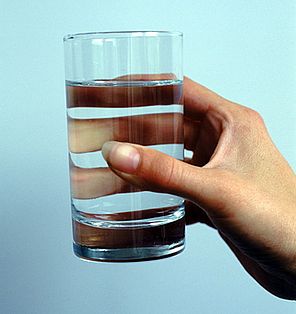The State of Our Drinking Water Systems
February 2012

The Plattsburgh Press Republican recently reported that the spillway at the 90-year old Mead Dam, which supplies water for the city, does not meet state regulations and must be reconstructed. Like many places throughout the country, Plattsburgh faces an aging water supply system. In other cities the situation is even more ominous; the city of Chelan, Washington, for example, is still served by wooden pipes lashed together with metal. The American Society of Civil Engineers recently gave our nation’s drinking water infrastructure a grade of D-. As a consequence of the poor condition, there are 240,000 water main breaks each year in the United States. The deteriorating state of America’s water supply infrastructure is appalling, and remedying the problem will not be cheap.
Both New York and Vermont face challenges. New York State alone predicts a $38.7 billion price tag for upgrading water supply systems. Vermont’s drinking water infrastructure needs an investment of $395 million over the next twenty years.
Nationwide EPA estimates that our drinking water systems require an investment of $334.8 billion over the next twenty years. Of that 60% is needed to replace pipes and the like used to distribute water, 22% is needed to update treatment of water, and 11% is needed for better storage. Half of the nation’s water infrastructure was classified as poor, very poor, or life-elapsed meaning it should have already been replaced. EPA’s assessment does not even include dam projects like the one Plattsburgh is currently considering.
Compounding the problem, water pipes installed in the 1920s have a shorter lifespan than those installed in the late-1800s while the lifespan for those installed in the 1950s is shorter still. As a result, three generations of piping will need to be replaced at about the same time.
Out-dated water supply systems not only risk failure, they are also inefficient. Old pipes are more likely to leak, losing not only the clean water they contain, but also all the energy that went into cleaning the water and pumping it through the pipes. Leaking pipes lose an estimated six to seven billion gallons of already treated clean drinking water each day, 14% of all treated water.
In late January 2012, The Johnson Foundation, American Rivers, and Ceres jointly released a report offering some suggestions for financing future water projects. The report concluded that just rebuilding and operating our water systems in their current form would be enormously inefficient. Today different water management systems, for example drinking water, stormwater and wastewater, are built, financed and operated as entirely distinct units rather than as efficient, interconnected systems. The report recommended exploring new means of financing water projects including public private partnerships, greater reliance on local rather than state and federal funding, increased attention to projects that improve efficiency of water management, and water pricing systems that distinguish between different water uses such as lawn watering, drinking water and toilet water.
In the U.S. we spend $21 billion a year on bottled water. By comparison, we spend $29 billion per year maintaining our entire water system. Yet more than 25% of bottled water comes from these same municipal systems. It makes no sense to spend as much on disposable plastic bottles as it does on providing clean drinking water for all citizens.
The anthropologist/philosopher Gregory Bateson was known to tell the story of how one English college prepared for its future:
New College, Oxford, founded in 1379, has a great dining hall with giant oak beams across the top - eighteen inches square, forty-five feet long. Some time ago, an entomologist found that the beams were full of beetles. This was reported to the College Council, who met in some dismay, because where would they get beams of that caliber nowadays? They called in the College Forester, who of course had not been near the College itself for some years, and asked if there might be some oaks on College land somewhere.
"And he pulled his forelock and said, 'Well, sirs, we was wonderin' when you'd be askin.'
Apparently, when the College was founded, a grove of oaks had been planted to replace the beams in the dining hall when they became beetly, because oak beams always become beetly in the end. This plan had been passed down from one Forester to the next for four hundred years. 'You don't cut them oaks. Them's for the College 'all.'
If only we had equivalent foresight to prepare for the inevitable decay of our public water systems. States and municipalities must do a better job of budgeting for infrastructure replacement.
Lake Look is a monthly natural history column produced by the Lake Champlain Committee (LCC). Formed in 1963, LCC is the only bi-state organization solely dedicated to protecting Lake Champlain’s health and accessibility. LCC uses science-based advocacy, education, and collaborative action to protect and restore water quality, safeguard natural habitats, foster stewardship, and ensure recreational access.
Get involved by joining LCC using our website secure form (at www.lakechamplaincommittee.org), or mail your contribution (Lake Champlain Committee, 208 Flynn Avenue - BLDG 3 - STUDIO 3-F, Burlington, VT 05401), or contact us at (802) 658-1414, or lcc@lakechamplaincommittee.org for more information.
